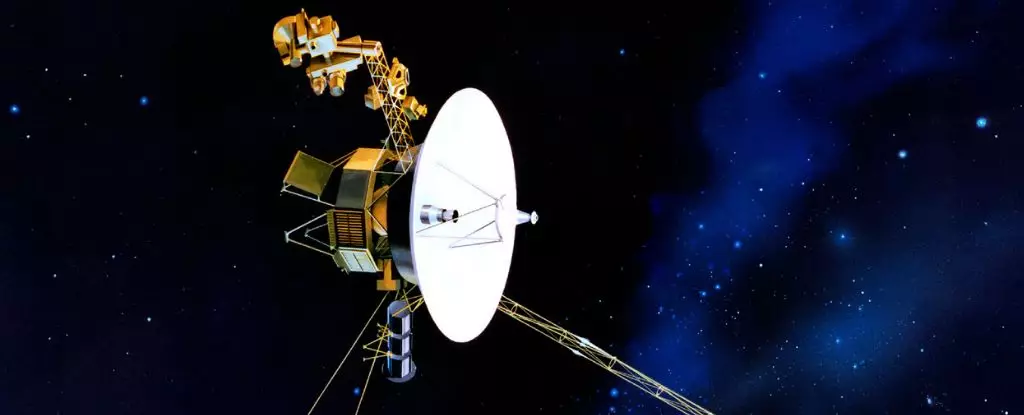Since their inception in the late 1970s, the Voyager spacecraft have captured the imaginations of scientists and space enthusiasts alike. Voyager 1 and Voyager 2, launched by NASA in August and September of 1977, respectively, embarked on a mission to unlock the mysteries of our solar system. They harnessed a rare planetary alignment that facilitated a tour of the outer planets, taking advantage of gravitational assists to propel them toward Jupiter, Saturn, Uranus, and Neptune. This monumental endeavor not only allowed for unprecedented exploration but also set the stage for a journey into interstellar space, where they continue to transmit invaluable data.
As these spacecraft have traversed the vastness of space—now over 20.5 billion kilometers (12.8 billion miles) from Earth—time has not been kind. The Voyagers are powered by radioisotope thermoelectric generators (RTGs) that convert heat from decaying plutonium into electrical energy. With each passing year, the output of these generators diminishes, threatening the instruments onboard. Recently, NASA made the difficult decision to deactivate Voyager 2’s plasma science instrument, a crucial device in measuring ionized particles and their directional flow. This action, while necessary, underscores the urgency of the mission’s circumstances.
The gradual decline of power available aboard the Voyager spacecraft necessitates a delicate balancing act between maintaining essential functions and conducting scientific research. As NASA engineers have sought to stave off instrument shutdowns, they’ve optimized power management strategies to prolong mission life. Despite the recent deactivation of the plasma science instrument, Voyager 2 still retains sufficient electricity to operate four other scientific instruments: a magnetometer, a charged particle instrument, a cosmic ray system, and a plasma wave detector.
This delicate orchestration of power conservation reflects the pioneering spirit of the Voyager mission. The plasma science instrument, instrumental in elucidating the heliopause—the boundary between our solar system and interstellar space—has historically offered insights that are invaluable to understanding space weather and the solar wind. Despite its declining utility, it had previously played a pivotal role in confirming Voyager 2’s exit from the heliosphere, marking a significant milestone in humanity’s exploration of the cosmos.
The legacy of the Voyager missions is not solely defined by their current status but also by their historic encounters with the gas and ice giants of our solar system. Voyager 1 and 2 provided humanity with stunning imagery and groundbreaking data regarding these planets. Voyager 1 made flybys of Jupiter and Saturn, revealing remarkable details about their atmospheres, moons, and ring systems. Meanwhile, Voyager 2 stands alone as the only spacecraft to have visited Uranus and Neptune, unveiling a wealth of information about these enigmatic ice giants.
These encounters have transformed our understanding of the outer planets, igniting scholarly debates and inspiring generations of scientists. Much of the foundational knowledge we possess today about the planetary bodies in our solar system stems from data collected by these two remarkable probes. Their nuanced observations continue to form the bedrock of ongoing research in planetary science and astronomy.
As Voyager 1 and 2 embark on their journeys into interstellar space, they serve as integral links in the quest to comprehend the cosmos beyond our sun’s influence. With Voyager 1 having crossed the heliopause on August 25, 2012, followed by Voyager 2 on November 5, 2018, both probes are now providing data that help scientists study the interstellar medium—the vast expanse filled with cosmic rays and magnetic fields that exists beyond the influence of the Sun.
The communication lag of nearly two days between Earth and the spacecraft poses challenges, yet it exemplifies the human spirit of exploration. As data continues to flow back to Earth, the findings could offer profound insights into fundamental questions about the universe, including the nature of dark matter and the behavior of cosmic rays.
As the Voyagers continue their trajectory through space, it is also a time for reflection on their contributions to science and our broader understanding of the universe. The innovative engineering and design behind these spacecraft have paved the way for future interstellar missions, presenting a captivating framework for how humanity can reach beyond the confines of our solar system.
Although the end of operational capability is near for Voyager 2’s plasma science instrument, the legacy of the Voyager missions will endure, reminding us of our relentless curiosity and our shared quest for knowledge. The voyage is far from over; rather, it signifies the beginning of a new chapter. The exploration of the interstellar medium and beyond promises to reveal mysteries about our universe that we have yet to fathom.


Leave a Reply